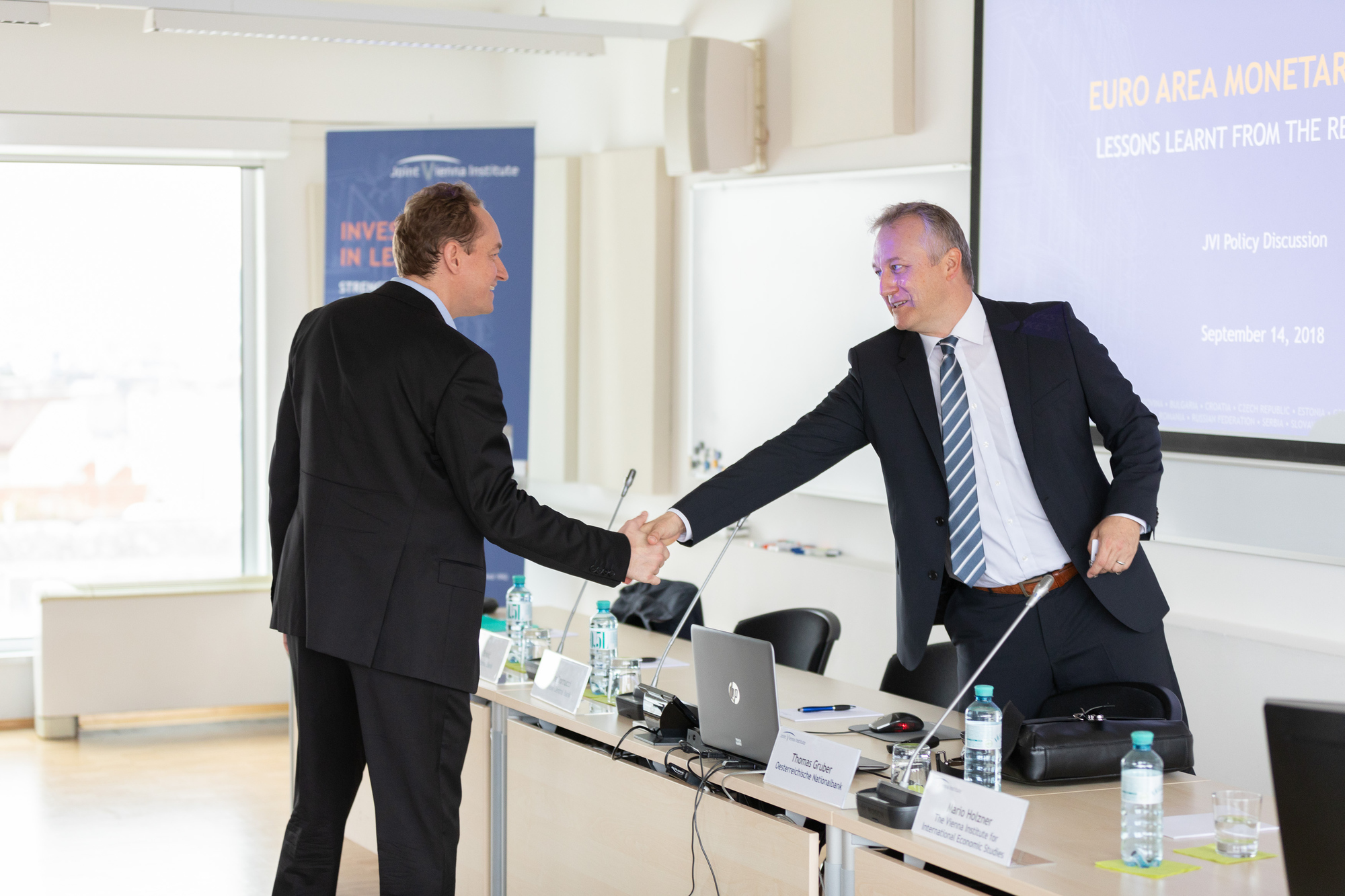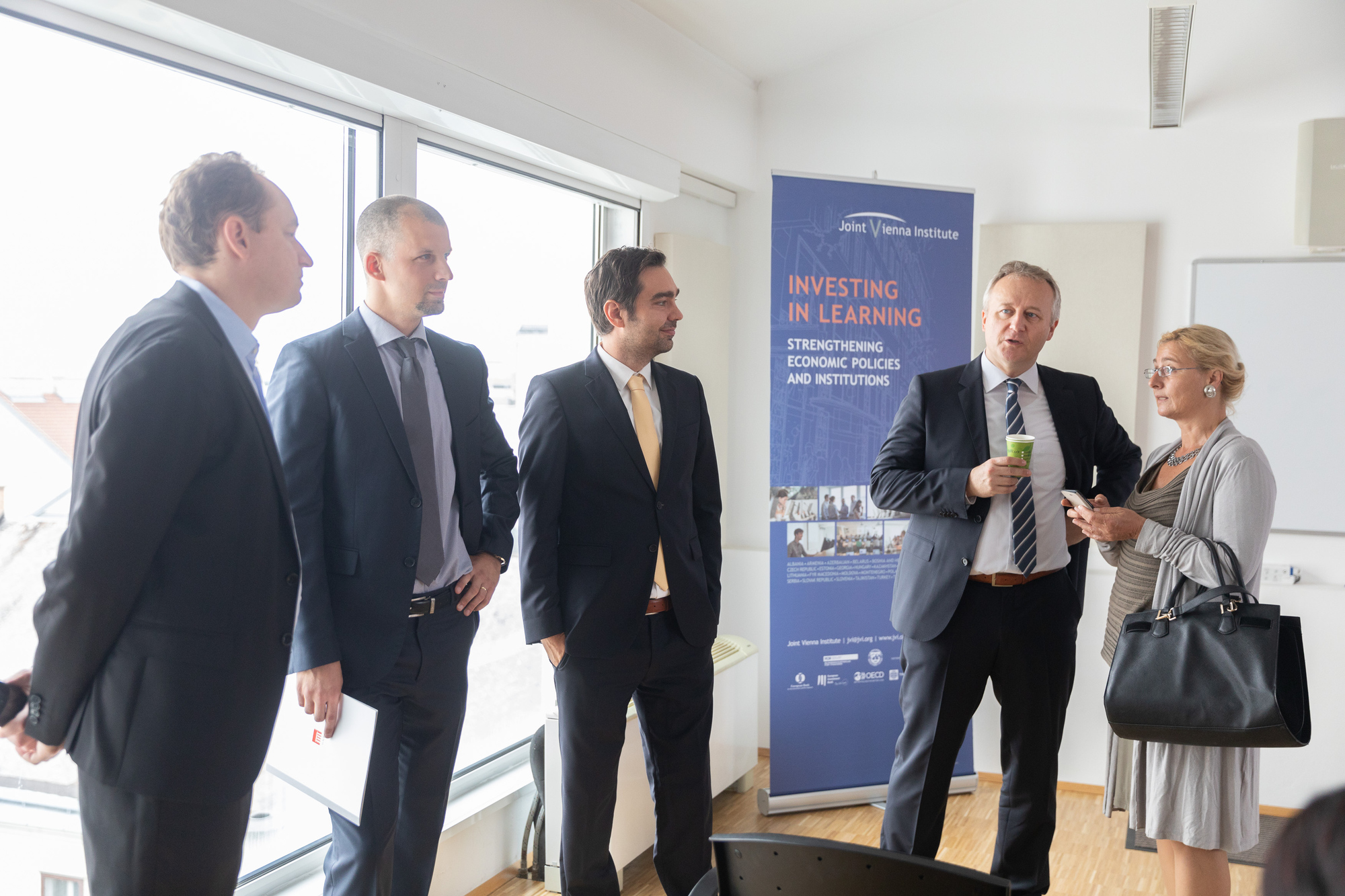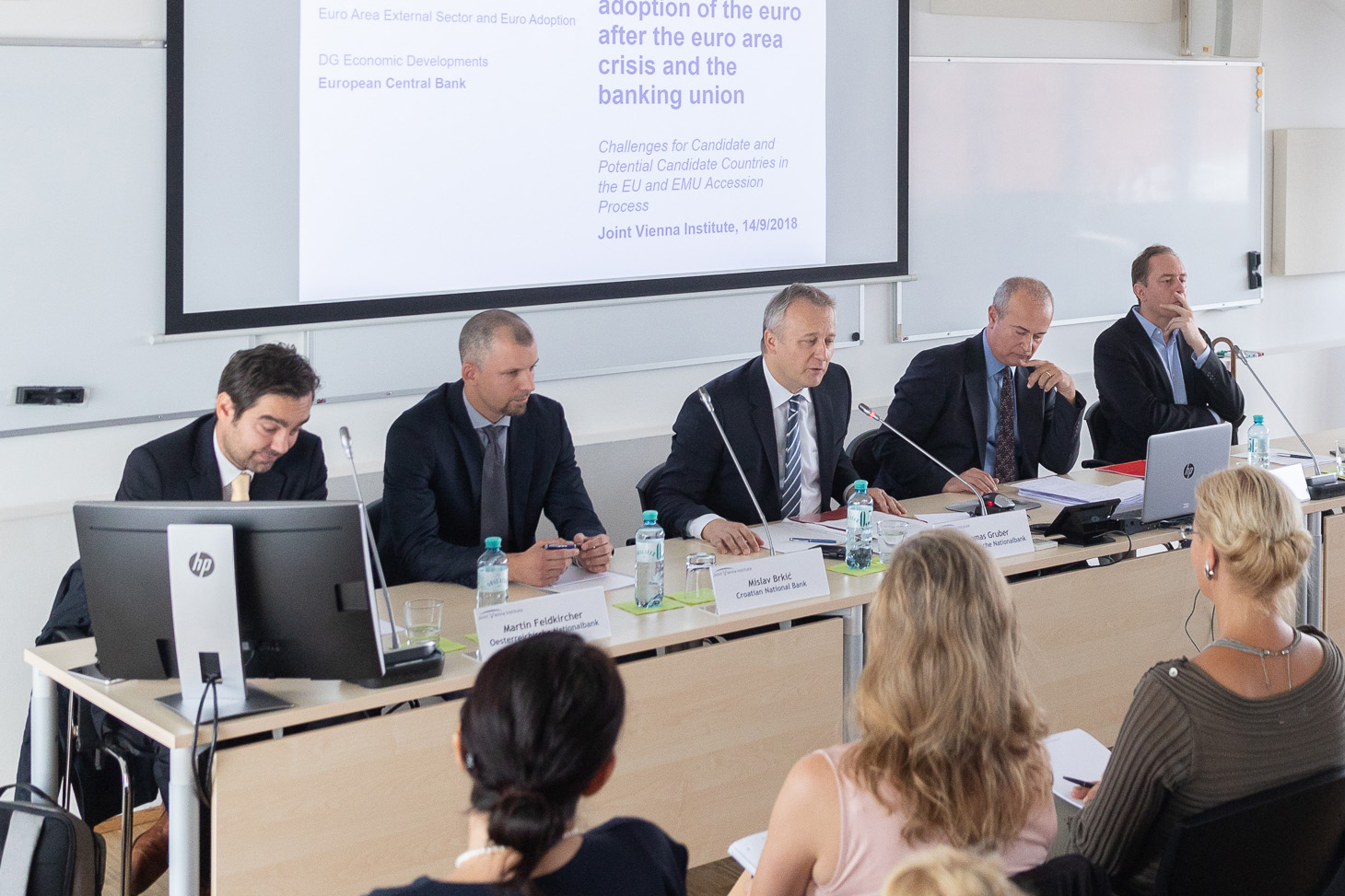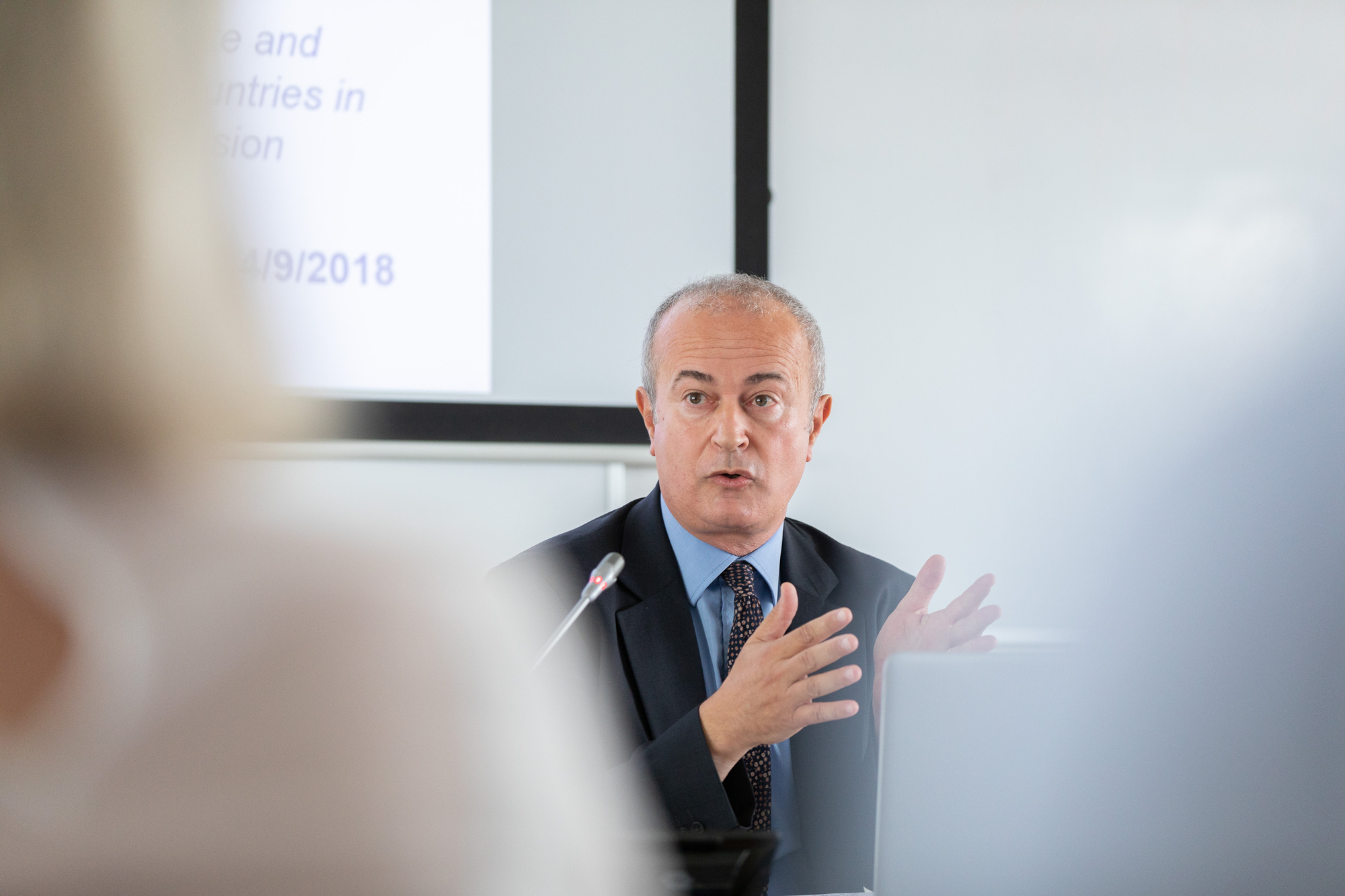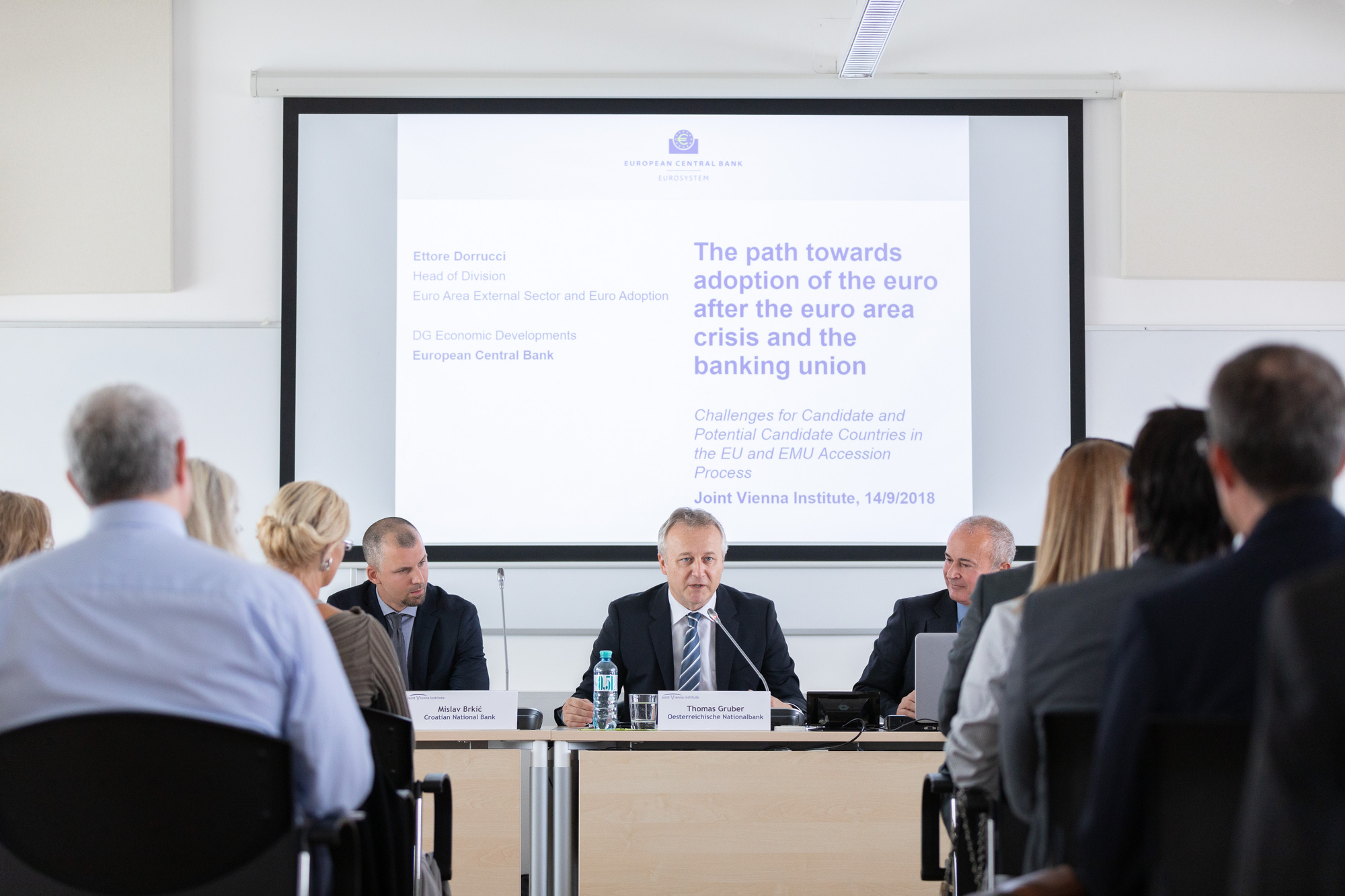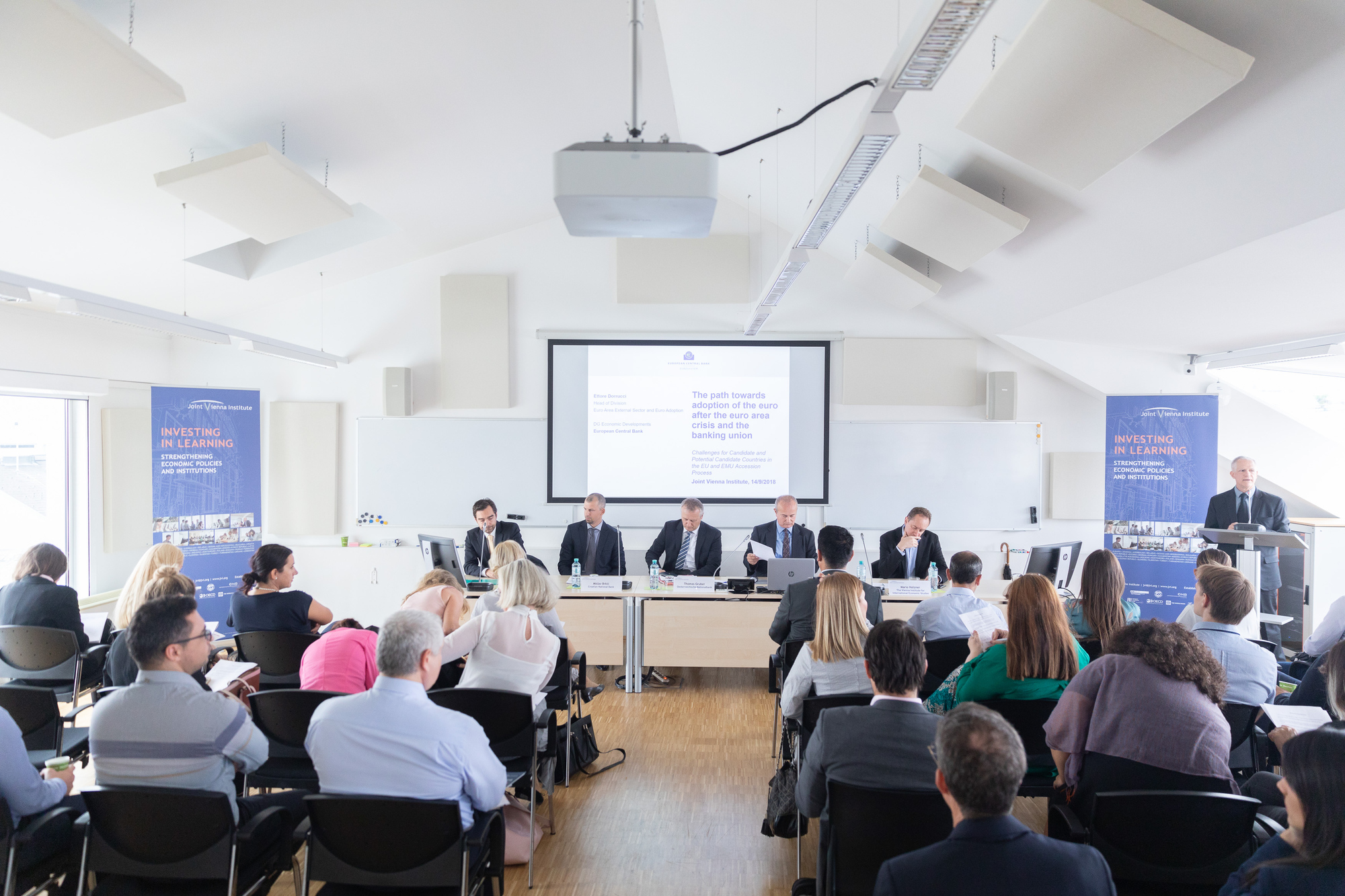Summary
The recent crisis and policy responses to it have affected institutions and monetary policy in the euro area (EA). That has had major consequences for Central, Eastern, and South Eastern European (CESEE) countries, which have close trade and financial links with the EA and many of which are considering joining the EU or adopting the euro. The JVI and the Austrian National Bank (OeNB) convened a panel on September 14, chaired by the OeNB’s Thomas Gruber, to explore these consequences and their implications. The discussants were Ettore Dorrucci from the European Central Bank (ECB), Mislav Brkić from the Croatian National Bank, OeNB’s Martin Feldkircher, and Mario Holzner from the Vienna Institute for International Economic Studies. These were some of the main points they made:
EU Accession and Euro Adoption
Mr. Dorrucci discussed how the EA crisis and the start of the banking union have affected the path towards euro adoption for new member countries, with Bulgaria as a recent example. Among lessons from the crisis, he emphasized the importance of sustainable economic convergence in all its dimensions, and the need for in-depth country assessment based on a holistic approach that would assess such convergence along with the Maastricht criteria. The banking union requires prospective members to prepare for the Single Supervisory Mechanism and the Single Regulatory Mechanism before they participate in those mechanisms.
When countries join the European Exchange Rate Mechanism (ERM II)—an intermediate step in adopting the euro—their policy commitments need to reflect these lessons. Countries need to start working with the ECB before joining the banking union. The commitment to pursue stability-oriented policies should be country-specific, reflecting each country’s circumstances and weaknesses. Those commitments should include measures to be taken both prior to and after entering ERM II, and they must be specific, realistic, verifiable, and nondiscriminatory. As usual, country ownership is key to successful implementation of the policy measures.
Mr. Dorrucci concluded that successful preparation for euro adoption takes a long path; the earlier countries start preparing, the better.
Mr. Holzner agreed that the EU and EMU accession process for new states might appear to be lengthy. One reason may be a dilatory pace of structural reforms, such as slow improvement in governance indicators. To support the process and help the countries, he suggested to consider partial, not full, accession to some EU treaties. Balkan economies might benefit from such accession while containing the risks, given their close links with European economies: large volumes of exports to and remittances from the EU, a high degree of euroization, and a high share of foreign ownership in the banking sector. Since these economies are relatively small, such accession will also not entail large costs for the EU.
Euro Area Monetary Policy Response to Crisis and Spillovers to CESEE Economies
Mr. Brkić emphasized that the ECB policy response to the crisis included a range of unconventional monetary policy measures. In the first years of implementation, these measures helped to stem the financial crisis by enhancing liquidity provision in both euros and U.S. dollars. Later, the ECB’s measures helped to ease financial conditions and support demand when regular transmission channels were impaired, although that might eventually lead to a build-up of financial imbalances. The ECB may also have helped to contain the sovereign debt crisis. Still, monetary policy cannot solve all problems; macroeconomic fundamentals are important for sustainable development in the EA.
Mr. Feldkircher noted that spillovers to the CESEE economies from the ECB’s unconventional monetary policy were overall positive. The measures it undertook stimulated output in the CESEE region through real and financial channels: higher external demand, lower long-term yields, and higher equity prices, although that was partly offset by local currency exchange rate appreciation. Looking ahead, the CESEE countries now need to prepare for the ECB’s exit from its unconventional monetary policy.
Open Discussion
The Q&A session after the panel touched on the margins of exchange rate fluctuations in ERM II, monetary policy frameworks after the crisis, and cryptocurrencies. When discussing Croatia, it was noted that the euro seems to be the optimal currency for the country, given its already high euroization, remittances, and strong trade and financial links with the EA; that said, the country’s prospects for joining ERM II and adopting the euro will depend on the pace of its structural reforms. Discussing euro adoption elsewhere, panelists noted that the opportunity it provides can be wasted as well as turned into benefits. So the accession process should equip each country with the proper conditions and policies to reap the benefits of the euro.
Alexei Miksjuk, Economist, JVI


